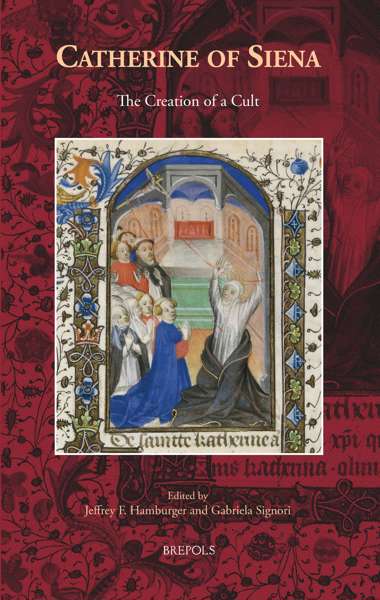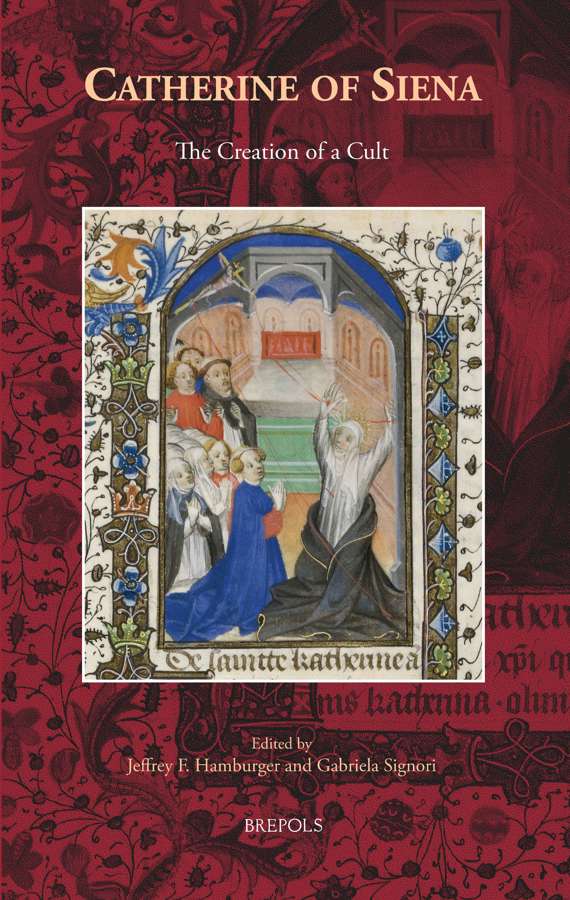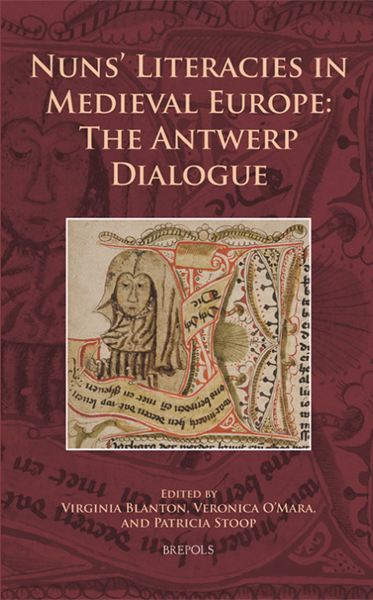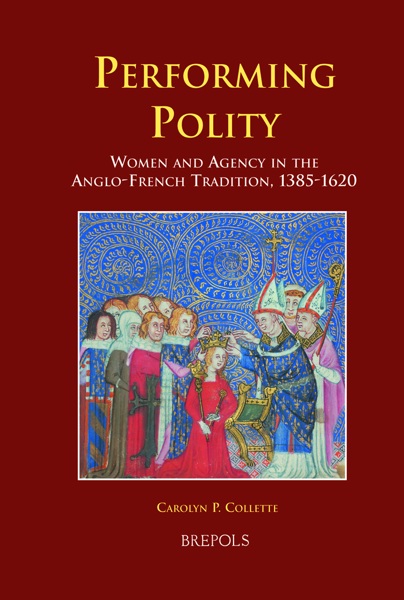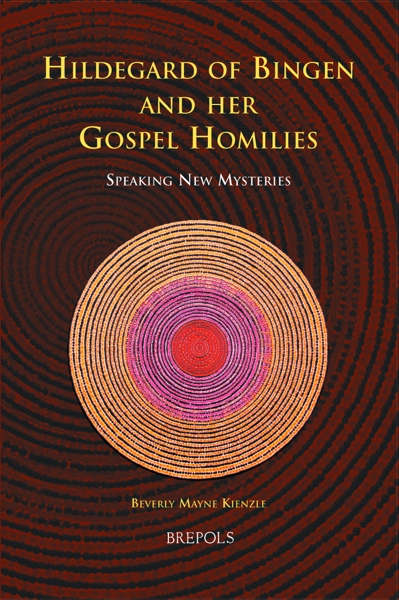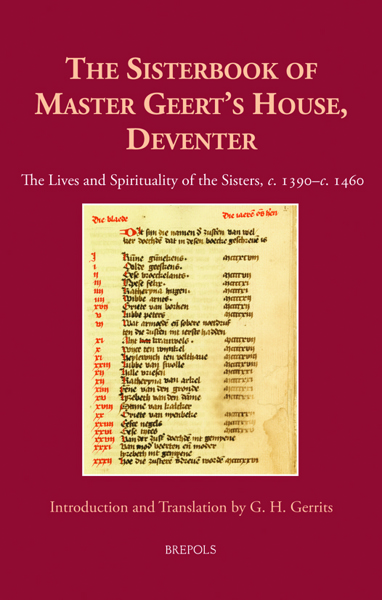
- Pages: x + 342 p.
- Size:156 x 234 mm
- Illustrations:31 b/w
- Language(s):English
- Publication Year:2013
- € 110,00 EXCL. VAT RETAIL PRICE
- ISBN: 978-2-503-54415-1
- Hardback
- Available
- € 110,00 EXCL. VAT RETAIL PRICE
- ISBN: 978-2-503-54485-4
- E-book
- Available
Focusing on the critical case of Catherine of Siena (d. 1380), the essays in this volume consider the role of texts, translations and images in various media in constructing and disseminating the cult of a saint in the late Middle Ages.
"(...) read together the essays bring a fresh perspective to the study of Catherine of Siena and her cult. The authors' collective interest in the networks through which a new cult was promoted and diffused should inspire similar inquiries in the case of other late medieval saints." (Laura Ackerman Smoller, in: Renaissance Quarterly, issue 67.4, Winter 2014, p. 1386-1387)
"On the whole, the articles are impressive in the breadth of their scholarship and for the various lenses they engage to examine the cult of St. Catherine. All in all, they offer us a rich picture of how the cult of this particular saint was spread in word and image by distinct media within diverse contexts to a range of audiences." (Nirit Ben-Aryeh Debby, in: The Medieval Review, December 2014, [14.12.13])
"Catherine of Siena: The Creation of a Cult is a good example of what a multidisciplinary approach can bring to the study of the politics of sanctity." (Bernard McGinn, in: Speculum, 90/2, April 2015, p. 549-551)
"The book makes a significant contribution to understanding the dissemination of Catherine’s medieval cult in Bohemia, England, France, Germany and, of course, Italy. The individual articles advance Catherinian studies by outlining and pointing the way forward to sources and themes that need further investigation. The volume will be of great value to scholars of Catherine of Siena." (Carolyn Muessig, in: Archa Verbi, 11, 2014, p. 215-217)
"L’ouvrage enrichit de manière tout à fait suggestive, à l’échelle de l’Occident, la connaissance du lent et complexe cheminement de la mémoire de Catherine de Sienne (...)" (Catherine Vincent, dans: Francia-Recensio, 2015/2, http://www.perspectivia.net/publikationen/francia/francia-recensio/2015-2/MA/hamburger_vincent)
"(...) bietet das von Hamburger und Signori edierte Buch als Ausgangspunkt fur alle, die uber die Kultpropaganda und -verbreitung um Katharina von Siena informiert sein mochten, allemal ein unentbehrliches Arbeitsinstrument. Aufgrund seiner fundierten Beitragedurfte sich der Sammelband dauerhaft in die Bestenliste der bereits zu Katharina von Siena publizierten Werke einschreiben." (Sabine Sommerer, in: Zeitschrift für historische Forschung 42, 4, 2015, p. 704-705)
"On ne peut que recommander cet ouvrage réalisé par les meilleurs spécialistes de ces questions et où chaque chapitre se termine par une précieuse mise au point bibliographique. Il permet en effet de mieux mesurer les enjeux que comportait la reconnaissance de la sainteté de la mystique siennoise par l'Église et l'impact de sa canonisation sur l'histoire de la spiritualité occidentale." (André Vauchez, in: Revue Mabillon, n.s. 26, 2015, p. 373-374)
« (…) ouvrage d’un grand intérêt » (Analecta Bollandiana, 134/I, 2016, p. 196)
« Cette collection d’art. – bons dans leur majorité, voire très bons – témoigne des difficultés entourant la construction du personnage de la sainte. » (Ralf Lutzelschwab, dans Le Moyen Age, 122/2, 2016, p. 502)
How does one construct a saint and promote a cult beyond the immediate community in which he or she lived? Italian mendicants had accumulated a good deal of experience in dealing with this politically explosive question. The posthumous description of the life of Francis of Assisi (d. 1226) written by the Master General of the order, Bonaventure (d. 1274), could be regarded as paradigmatic in this regard. A similarly massive intervention in the production and diffusion of a cult can be observed in the case of the Dominican tertiary, Catherine of Siena (d. 1380), who in many respects (e.g. the imitation of Christ and her stigmatization) ‘competed’ with Francis of Assisi. Raymund of Capua (d. 1399), the Master General of the order, established the foundation for the dissemination of the cult by writing the authoritative life, but it was only the following generation that succeeded in establishing and disseminating the cult on a broad basis by means of copies, adaptations, and translations. The question of how to make a cult, which stands at the center of this volume, thus presents itself in terms of the challenge of rewriting a legend for different audiences. The various contributions consider the role, not only of texts in many different vernaculars (Czech, English, French, German, and Italian), but also of images, whether separately or in connection with one another.
The Making of a Saint: Catherine of Siena, Tommaso Caffarini, and the Others – Introduction — JEFFREY F. HAMBURGER AND GABRIELA SIGNORI
Canonization, Cult, and Relics
Many Strategies and One Goal: The Difficult Road to the Canonization of Catherine of Siena — OTFRIED KRAFFT
‘Sacra lipsana’: The Relics of Catherine of Siena in the Context of Propagation, Piety, and Community — MICHAEL HOHLSTEIN
Catherine of Siena and the Italian Public — GABRIELLA ZARRI
Manuscripts and Prints
The Transmission of the Upper German Life of Catherine of Siena — THOMAS BRAKMANN
Humanist Lives of Catherine of Siena: Latin Prose Narratives on the Italian Peninsula (1461–1505) — ALISON FRAZIER
Saintly Authorship in the Italian Renaissance: The Quattrocento Reception of Catherine of Siena’s Letters — F. THOMAS LUONGO
‘Pro solatio illicteratorum’: The Earliest Italian Translations of the Legenda maior — SILVIA NOCENTINI
Translating St Catherine of Siena in Fifteenth-Century England — DIRK SCHULTZE
Catherine in Words and Pictures
‘Uff daz man daz unsicher von dem sichren bekenen mug’: The Evidence of Visions in the Illustrated Vitae of Catherine of Siena — KRISTIN BÖSE
The Dilemma of a Saint’s Portrait: Catherine’s Stigmata between Invisible Body Trace and Visible Pictorial Sign — DAVID GANZ
Wondrous Words: Catherine of Siena’s Miraculous Reading and Writing According to the Early Sources — CATHERINE M. MOONEY
Writing versus Voice: Tommaso Caffarini and the Production of a Literate Catherine — JANE TYLUS
Perspectives
Italian Holy Women against Bohemian Heretics: Catherine of Siena and the ‘Second Catherines’ in the Kingdom of Bohemia — TAMAR HERZIG
